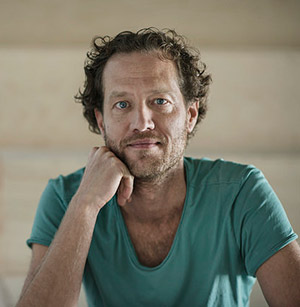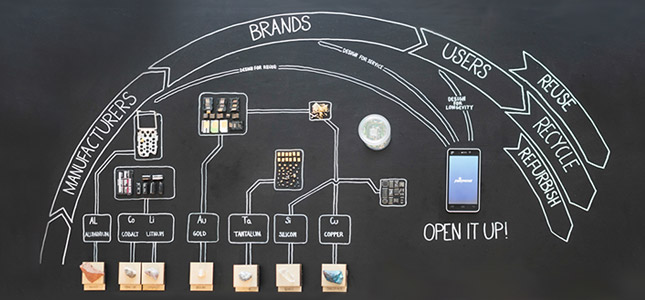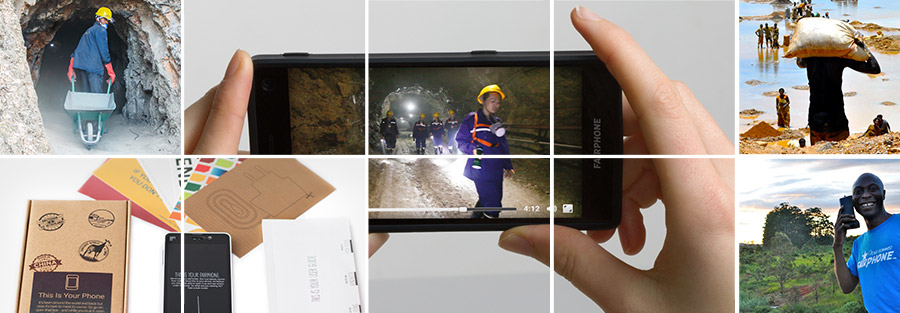Fairphone Answers the Call for More Sustainable Electronics
Conflict-free minerals, worker safety, and environmental conservation are core components of Fairphone 2’s BOM

Fairphone Founder Bas van Abel
Life may not be fair, but the founder of the Amsterdam, Netherlands-based Fairphone, Bas van Abel, believes it certainly can be fairer than it is today; particularly for the massive global network of individuals that touch and are touched by the electronics supply chain. Spurred to action in 2010 by the rising violence in regions where minerals and metals used in consumer devices are mined, van Abel became determined to stimulate a global discussion about fairness.
Given the ubiquitous nature of mobile phones, Fairphone’s leaders determined that a “fair” phone would be the perfect vehicle to tell their story. The moral of that story is that it is possible to create a commercially viable product without compromising ethics and social values
When Fairphone released its first model in 2013, more than 60 percent of the global smartphone market share was firmly controlled by the industry’s top five players, with Samsung and Apple as the two clear leaders of the pack. But that did not discourage Fairphone’s leadership team, because, from the very start, the aim of Fairphone was not so much to rule the world, as to change it – for the better.
From the very start, the aim of Fairphone was not so much to rule the world, as to change it – for the better.
Getting Better with Age
To create a more ethical product, choices at every stage in the process of developing and producing their Fairphone device – mining, design, manufacturing and life cycle support – are driven by a commitment to improving the electronics industry value chain. So much so, that, when it came time to start development on the second generation of their flagship device, Fairphone did what would otherwise be considered unthinkable in the competitive high-tech sector; they started the process from scratch. The second-generation Fairphone, and all the processes that support it, would not represent an evolutionary step, but an entirely new design and supply chain.
“Our goal is that each version of Fairphone will be fairer than the last one,” said Bibi Bleekemolen, who oversees impact and innovation at Fairphone. While Fairphone 1 demonstrated the potential to harness commercial strategies to promote an agenda of fairness, certain parameters of the program limited the company’s visibility and control within the supply chain. “Fairphone 1 was a licensed design. We did not have the ownership over the materials and composition of the supply chain as much as we wanted.”
Designing the Fairphone 2
With Fairphone 2, the company had more say in the design and engineering processes, product specifications, components and materials selection, and assembly processes; as well as greater visibility into who produced each component, under what conditions and with which minerals. As a result, they were able to better align design features, component and supply chain partner selection, and manufacturing to increase supply chain transparency, while still making improvements to the product design and functionality. Longevity and repairability were the leading design and manufacturing considerations for the Fairphone 2. The company wanted more durable parts, which could be easily replaced or supported. Fairphone hopes this will encourage users to extend their phone’s lifespan, and thus, reduce both e-waste and the phone’s environmental footprint.
Fairphone did what would otherwise be considered unthinkable in the competitive high-tech sector; they started the process from scratch.
Longevity and repairability were the leading design and manufacturing considerations for the Fairphone 2. The company wanted more durable parts, which could be easily replaced or supported. Fairphone hopes this will encourage users to extend their phone’s lifespan, and thus, reduce both e-waste and the phone’s environmental footprint.
The downside of the full product redesign, however, was the need to raise the consumer retail price of the phone. The Fairphone 1 sold for approximately $350 (325 euros), while the Fairphone 2 came to market at approximately $570 (525 euros), Bleekemolen said. Several factors contributed to that increase, including moving from a pre-designed licensing arrangement with a built in set of components, to designing a new phone that required higher quality, more expensive components and hardware. Though the price hike was not ideal, according to a recent Neilson poll, 66 percent of consumers are willing to pay a higher price for products made by companies committed to positive social and environmental impact.
As Fairphone worked on the modular design features that would support its longevity and repairability targets, it concentrated on building stronger relationships with suppliers who would commit to providing longer-term support for their components, and established partnerships with new supply chain partners, including China-based manufacturer Hi-P International Ltd. “To keep the phone useful for a long time, we selected proven components that we felt would be supported for longer,” Bleekemolen added.
First, Do No Harm
Along its journey, Fairphone has found that the line between ‘fair’ and ‘unfair’ suppliers is not as easily drawn as one might think, and since the definition of fair is quite subjective, the company acknowledges that creating a product that is 100 percent “fair” is unrealistic. “The electronics supply chain is far too complex, and its many tiers of component and raw material suppliers and sub-suppliers make it difficult to know the exact source of origin and sourcing strategies around every single item that goes into a phone,” Bleekemolen said.
Fairphone has found that the line between ‘fair’ and ‘unfair’ suppliers is not as easily drawn as one might think
Still, there is little doubt that there is room for improvement in the electronics supply chain. That is why, when they are exploring or entering a relationship with a new supplier, Fairphone looks for a willingness to consider opportunities to improve. “Fairphone doesn’t claim to select ‘100 percent fair’ or perfect alternatives already,” she said. “But, by making a phone and working with suppliers, we can develop and implement activities that create (more) positive social and environmental value.”
Fairphone was recently awarded the United Nations Momentum for Change Award at the UN Climate Change Conference in Paris. The award recognizes innovative and transformative solutions that address both climate change and wider economic, social and environmental challenges.
Heart of Gold
Some suppliers, like Fairphone’s printed circuit board partner Austria Technologie & Systemtechnik AG (AT&S), see Fairphone’s strategy as a great compliment to the environmental programs they have already put in place.
One of the supply chain challenges Fairphone and AT&S have taken on is more responsible gold sourcing. Gold is one of the 30 to 40 different minerals and metals used in the production of a smartphone. Pollution, dangerous working conditions and exploitive child labor practices are well-publicized problems in many mines that feed the high-tech supply chain. To ensure that the gold used in the Fairphone was sourced responsibly, the two companies visited AT&S’ gold salt supplier in China, and Fairphone went to the Shanghai Gold Exchange to learn more about gold trading.
Fairphone and AT&S, with the help of the gold salt supplier, also visited an industrial gold mine in China, expanding the companies’ understanding about how gold enters the mobile phone supply chain. An AT&S company spokesperson described the effort as “a partnership between both parties who are committed to changing the electronics industry.”
These kinds of hands-on practices have helped Fairphone establish greater transparency between multiple tiers of suppliers and consumers, map its global supply chain more thoroughly and identify areas where additional work is needed to create an even fairer supply chain, Bleekemolen explained. Earlier this year, Fairphone announced that it has successfully established the first-ever Fairtrade gold supply chain for consumer electronics.
Social welfare within the supply chain is also a priority for Fairphone. For example, together with Hi-P, Fairphone is establishing a Worker Welfare Fund that provides the workforce with the financial means to invest in selected resources, such as additional training, entertainment and leisure activities or an increase in benefits. For each phone assembled at Hi-P’s facility in Suzhou, both Fairphone and Hi-P will contribute to the fund.
 Small, But Mighty
Small, But Mighty
“There’s a herd mentality when it comes to the mobile phone market. Companies have to figure out how to get people’s attention. Not only do the big smartphone makers have huge advertising budgets, but consumers tend to know what phone they want to buy before they even walk into the store,” said William Stofega, IDC’s program director for mobile phones. “But there are opportunities for companies to do something new and different. Although the market is very competitive, companies that define a niche may be successful. If Fairphone can partner with other companies in the channel, they may experience the halo effect that comes with saying ‘If you are environmentally conscious and concerned about the social impact products have on the world, here’s a phone for you.’”
Of all the options on the market, customers are choosing a company that puts social and environmental values first
While Fairphone’s sales estimates represent a mere drop in the bucket compared to the more than 230 million devices sold by Apple in 2015, those 150K prospective new customers represent a success that cannot be measured in market cap. Of all the options on the market, these customers are choosing a company that puts social and environmental values first; proving that doing business with purpose is, indeed, a sustainable business model.
